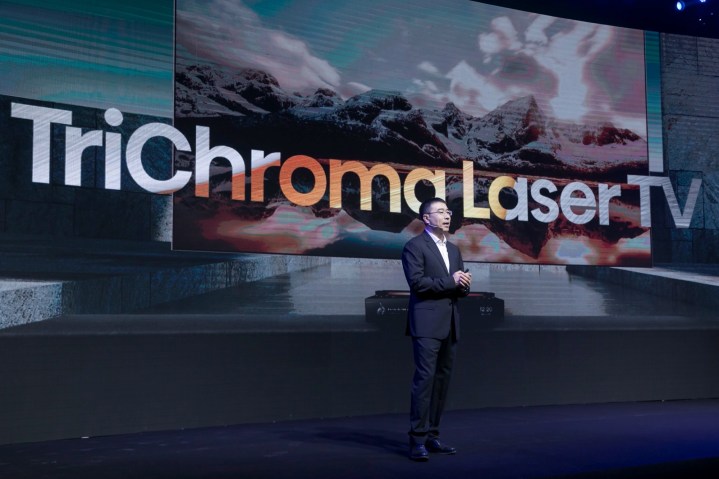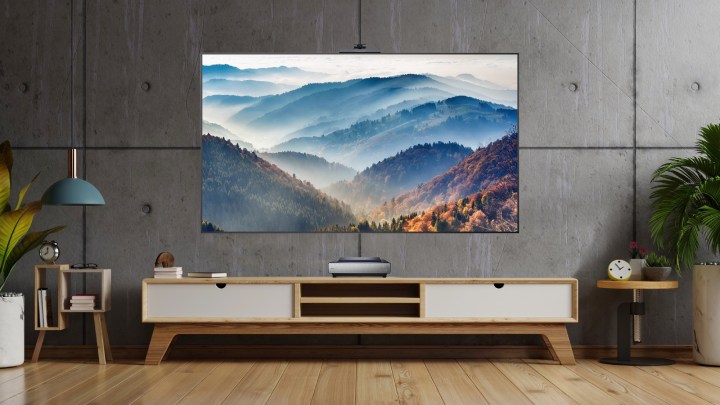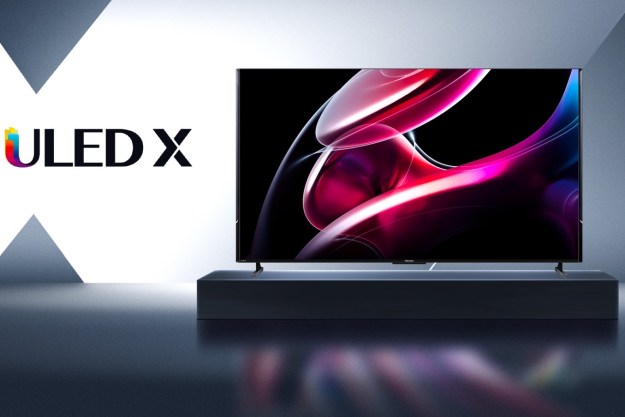
Officially, Hisense USA isn’t announcing any new products at CES 2021 — it expects to do so later this year — but that isn’t stopping the company’s global division from showing off its latest tech. That includes the launch of the company’s first TriChroma Laser TV, which will debut in 2021 in sizes ranging from 75 inches to 100 inches.
Hisense hasn’t offered a lot in the way of details — we don’t know how much these laser TVs will cost, when they’ll go on sale (or where), or what kind of support they’ll offer for various audio and video formats. But what we do know is that they will produce a crazy amount of colors. Hisense claims its TriChroma Laser TVs can generate over 150% of the DCI-P3 color space, and 107% of rec.BT2020 color space, which is a huge accomplishment for any TV.

For the uninitiated, DCI-P3 is a technical description of all of the many billions of colors that are used for digital cinema content. If you watch a digitally projected movie in a commercial movie theater, the colors you’ll see on the screen largely conform to this specification. The rec.BT2020 specification is newer and allows for even more colors, even though very few content creators are using it, and virtually no TVs on the market can display them.
The key to the TriChroma’s spectacular color range is in its name: The TVs use three discrete lasers, in red, green, and blue. Most laser TVs use a single color or sometimes two-color lasers, then use color filters to achieve a full spectrum. However, this approach is not as effective in terms of color accuracy (or the sheer number of colors) as a triple-color laser system.
The fact that Hisense clams its TriChroma Laser TVs can exceed even the newest of these color space specifications is impressive, but for the moment, it simply means you’ll be future-proofed. Much like you can’t enjoy the full capabilities of a Dolby Vision TV unless you’re watching Dolby Vision content, you’ll need a source of rec.BT2020 content to appreciate what these laser projectors can do.
These laser TVs get impressively bright, too. “TriChroma attains 20% brightness enhancement at the pixel level with a 430-nit picture brightness, exceeding that of a regular TV,” Hisense’s press release claims. While 430 nits is indeed very good for a laser TV, it’s worth keeping in mind that even a halfway decent QLED or OLED TV can produce a significantly brighter image.
All of this means that as impressive as the TriChroma Laser TV’s color capabilities are, you’re still going to need a dark room to get the best picture quality, and even then, HDR material may not be as vibrant as you’d get with other TV types.
Editors' Recommendations
- Hisense’s achingly bright U9N ULED TV is a UX for the masses
- Hisense shows off massively bright 98- and 100-inch TVs
- Hisense just debuted the world’s largest mini-LED TV at 100 inches
- Hisense’s mini-LED U6K TV arrives, starting at $500
- Leica launches the Hisense-powered $8,300 Cine 1, its first 4K Laser TV, at CES 2023



